Nonprofits and educational institutions face a universal challenge: how to honor growing numbers of generous supporters when physical space remains finite and traditional recognition methods carry escalating costs. A high school celebrating 50 years of donor support might need to acknowledge hundreds of contributors at various giving levels—far exceeding what standard plaque walls can accommodate. Universities managing multiple campaigns simultaneously require recognition systems flexible enough to spotlight current initiatives while preserving historical donor relationships.
Donor highlight boards solve this capacity crisis while transforming how organizations recognize generosity. Modern solutions combine unlimited digital capacity with engaging interactive experiences, instant content updates, searchable donor databases, and multimedia storytelling that creates emotional connections between donors and impact. These systems strengthen fundraising outcomes through improved donor retention, inspire increased giving by showcasing community support, demonstrate appreciation that builds lifelong relationships, and provide analytics measuring recognition effectiveness.
Why Donor Highlight Boards Matter for Fundraising Success
Donor recognition systems serve critical fundraising functions beyond courtesy acknowledgments. They motivate continued giving by making supporters feel genuinely valued, inspire new donors by demonstrating community confidence in your mission, build lasting relationships that increase lifetime donor value, and provide visible social proof that encourages others to contribute. The best donor highlight boards accomplish all objectives simultaneously while adapting to evolving campaigns across decades. Solutions like Rocket Alumni Solutions specialize in comprehensive recognition systems designed for organizations seeking to honor supporters without space or budget limitations.
Understanding Donor Highlight Boards: Purpose and Impact
Donor highlight boards exist along a spectrum from traditional physical plaques to fully digital interactive displays, with many hybrid approaches combining elements of both to meet diverse organizational needs and donor preferences.
The Strategic Value of Donor Recognition
Effective donor highlight boards serve as both appreciation tools and strategic fundraising assets. Organizations that invest in comprehensive recognition report measurable improvements in development outcomes.
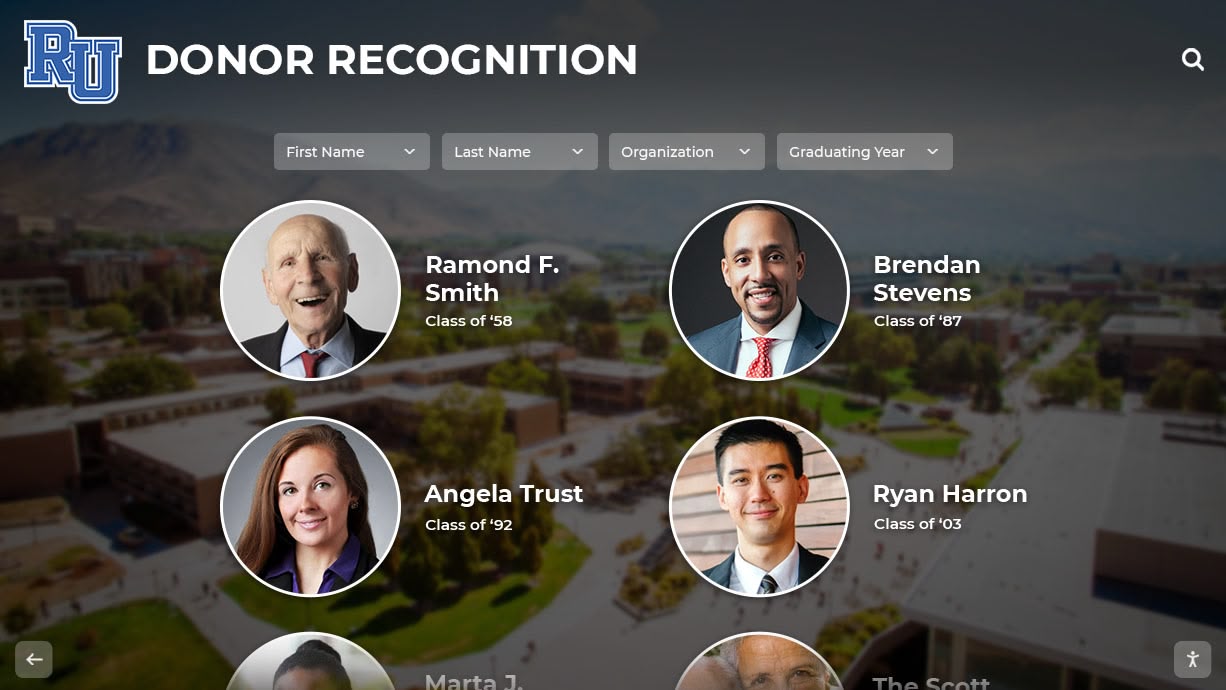
Recognition and Retention: Research consistently demonstrates that recognized donors give again at significantly higher rates than those receiving minimal acknowledgment. Visible, meaningful recognition makes contributors feel their generosity matters—not just to your organization, but to the broader community witnessing their commitment. This public affirmation reinforces donor identity as philanthropic individuals, strengthening their connection to your mission.
Inspiration and Social Proof: A well-populated donor highlight board provides powerful social validation that encourages prospective donors to give. When individuals see extensive community support for your organization, they gain confidence that their contribution joins a collective movement creating real impact. This peer influence proves particularly effective for attracting first-time donors hesitant about making initial commitments.
Storytelling and Mission Connection: The best donor boards transcend simple name lists to tell compelling stories about your organization’s impact and the supporters who make that impact possible. By connecting individual donors to specific outcomes—scholarships funded, facilities improved, programs expanded—recognition becomes meaningful narrative rather than transactional acknowledgment.
Fundraising Tool and Campaign Asset: Strategic recognition systems support active fundraising by highlighting current campaign progress, spotlighting leadership donors to inspire others, demonstrating giving pathways through tiered recognition levels, and creating conversation starters for development staff during donor meetings. Organizations viewing donor boards as fundraising tools rather than passive displays achieve significantly stronger results.
Traditional vs. Digital Donor Highlight Boards
Organizations choosing recognition systems must evaluate traditional and digital approaches against specific needs, budgets, donor demographics, and long-term objectives.
Traditional Physical Donor Boards: Brass plaques, engraved acrylic panels, and etched glass installations offer tangible recognition familiar to donors across generations. These systems provide permanent visible acknowledgment, require no technology or ongoing software costs, align with century-old recognition traditions, and create perceived prestige some donors value.
However, physical boards face insurmountable limitations including fixed space that eventually fills completely, high per-donor costs ($75-$300 per plaque) for additions, lengthy fabrication timelines delaying recognition, inability to reorganize or update information, static presentation without multimedia capabilities, and limited accessibility for donors unable to visit physically.
Digital Interactive Donor Highlight Boards: Modern digital recognition uses touchscreen displays and web-based platforms to create dynamic, engaging donor experiences. These systems provide effectively unlimited capacity for recognizing supporters at all levels, instant updates without fabrication delays or physical installation, rich multimedia storytelling with photos and videos, interactive search enabling donors to find themselves immediately, remote accessibility through web-based companion displays, and comprehensive analytics tracking engagement and effectiveness.

Digital systems require higher initial investment and depend on electricity plus occasional maintenance. However, most organizations discover advantages far outweigh these concerns when properly implemented with appropriate training and vendor support. Resources exploring digital donor recognition displays provide detailed frameworks for evaluating these modern approaches.
Hybrid Recognition Strategies: Many successful organizations implement combined approaches maintaining select traditional elements while adding digital capacity for comprehensive recognition. Hybrid systems might feature signature plaques for highest-tier donors displayed physically, digital touchscreens providing unlimited additional capacity, QR codes linking physical displays to detailed digital profiles, and web platforms ensuring accessibility beyond campus visits. This balanced strategy honors tradition while solving capacity limitations through technology.
Essential Features of Effective Donor Highlight Boards
Exceptional donor recognition systems share common features ensuring they serve fundraising needs effectively across decades of organizational growth and changing campaigns.
Unlimited Recognition Capacity
The best donor highlight boards eliminate forced choices about which supporters deserve acknowledgment. Digital systems provide capacity for thousands of donor profiles across all giving levels—every major gift, every annual contributor, every memorial donation, every planned giving commitment.
This unlimited capacity transforms recognition strategy from scarcity-driven prioritization to comprehensive celebration. Organizations can acknowledge lifetime giving societies, consecutive-years giving clubs, campaign-specific leadership recognition, legacy and planned giving commitments, corporate and foundation partners, memorial and tribute donations, and volunteer contributions alongside financial support.
When space constraints disappear, institutions discover recognition abundance—celebrating generosity comprehensively rather than selectively. Understanding donor recognition best practices illuminates how unlimited capacity strengthens fundraising outcomes.
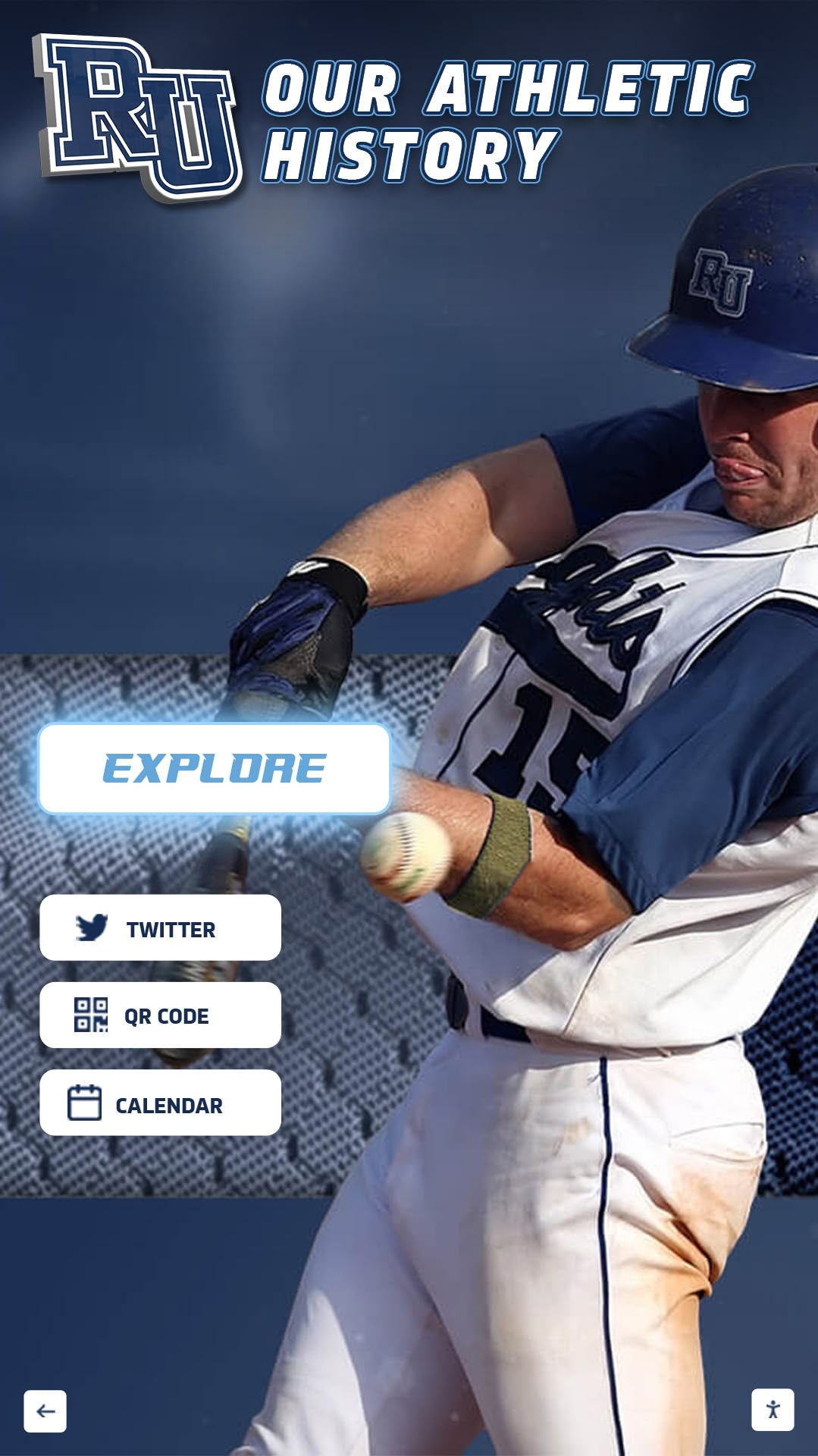
Intuitive Search and Navigation
Recognition value depends on discoverability. Donors attending events or visiting campuses should find their acknowledgment immediately through multiple pathways.
Search Functionality: Robust search allows entering donor names to instantly locate recognition. Alumni visiting campus find themselves in seconds. Family members discover loved ones’ memorial gifts immediately. Board members demonstrate recognition to prospective donors efficiently during tours.
Filtered Browsing: Organized categories enable intuitive exploration including giving-level sections showing major donors or annual supporters, year-based organization displaying contributions by decade or campaign, campaign-specific filters highlighting particular initiatives, and recognition society views celebrating membership in exclusive groups.
Featured Content Rotation: Home screens can rotate featured donors ensuring diverse supporters receive prominent visibility. Recent contributors appear alongside longtime supporters, smaller gifts gain visibility with transformational gifts, and varied recognition types receive balanced representation preventing dominant donors from overwhelming displays.
Rich Multimedia Integration
Text and statistics tell partial stories. The best donor highlight boards integrate comprehensive multimedia bringing generosity to life through photos, videos, and detailed narratives.
Visual Storytelling: High-resolution photos show donors at recognition events, facility dedications they funded, or program activities they support. Multiple images per donor create richer narratives than single static plaques permit. Historical photos document organizational evolution across decades—facilities donors funded, programs they launched, scholarships they endowed—adding contextual depth to recognition.
Video Integration: Video content creates emotional connections impossible with static displays. Donor testimonials explaining motivation for giving, beneficiary stories describing impact, facility tour videos showcasing spaces donors funded, and historical documentary content transform recognition from data display into engaging storytelling that captivates viewers.
Comprehensive Donor Profiles: Best-in-class profiles include complete giving history showing progression over time, specific funds or programs supported, biographical information and organizational connections, personal statements or reflections when donors provide them, and links to related recognition or family legacy giving. These thorough profiles celebrate complete philanthropic journeys rather than reducing generosity to basic statistics.
Real-Time Content Updates
Recognition relevance requires currency. The best systems enable instant updates when new gifts arrive, keeping content fresh and demonstrating organizational responsiveness to donor generosity.
Cloud-based content management platforms allow authorized development staff to add recognition from any internet-connected device. When a major gift closes on Monday, complete recognition with photos and details can appear by Tuesday morning. When campaign milestones are achieved, updated progress tracking acknowledges all contributors immediately.

This update capability eliminates frustrating delays between generosity and acknowledgment. Traditional systems requiring physical plaque production mean recognition might lag weeks or months behind gifts. Digital systems honor donors immediately while excitement remains high and prospect attention focuses on the achievement, maximizing both stewardship value and fundraising momentum.
Comprehensive Analytics and Insights
Modern recognition systems provide engagement data helping organizations understand program effectiveness and guide continuous improvement decisions.
Analytics typically track total interactions and viewing duration, most-viewed donor profiles and giving levels, popular search queries revealing visitor interests, peak usage times informing content strategy updates, and demographic information when available through web analytics. These insights demonstrate recognition value to board members and leadership while informing decisions about content emphasis, feature enhancements, and system expansion priorities.
Understanding which recognition generates highest engagement helps organizations emphasize similar content. Discovering certain giving levels receive limited attention might prompt more comprehensive profiles or improved navigation. Noticing geographic patterns in online access could inform regional cultivation strategies. Data-informed recognition management ensures continuous program improvement based on actual usage rather than assumptions.
Remote Accessibility and Sharing
The best recognition extends beyond physical displays through web access ensuring donors anywhere can explore acknowledgment, strengthening connections regardless of geographic distance from organization headquarters.
Web-based platforms provide 24/7 access from any device, social sharing features enabling recognition spread through donor networks, personalized bookmarks for following specific giving societies or campaigns, and permanent URLs for specific profiles facilitating direct sharing with family and professional contacts.
Donors can share their recognition with family, friends, and professional networks—extending organizational brand visibility while deepening personal pride in philanthropic commitments. Mobile responsiveness ensures optimal experiences across smartphones, tablets, and computers without requiring separate apps or configurations.
Designing Your Donor Highlight Board: Strategic Considerations
Successful donor recognition results from systematic planning addressing organizational objectives, donor preferences, budget realities, and long-term sustainability requirements.
Establishing Recognition Tiers and Categories
Thoughtful tier structure ensures all donors feel appropriately recognized while clearly communicating pathways to increased giving levels that major gift officers can reference during cultivation conversations.
Lifetime Giving Societies: Many organizations structure primary recognition around cumulative giving tiers such as Transformational Gifts ($1,000,000+), Visionary Society ($250,000-$999,999), Leadership Circle ($100,000-$249,999), President’s Society ($50,000-$99,999), Benefactors ($25,000-$49,999), Champions ($10,000-$24,999), and Patrons ($5,000-$9,999).
Annual Giving Recognition: Complementary annual giving societies acknowledge consistent support including Consecutive Years Clubs (5, 10, 25+ years), Annual Leadership Societies (top annual gifts each year), Young Alumni Societies (recent graduates establishing giving habits), and Parent Giving Societies (current parent annual supporters).
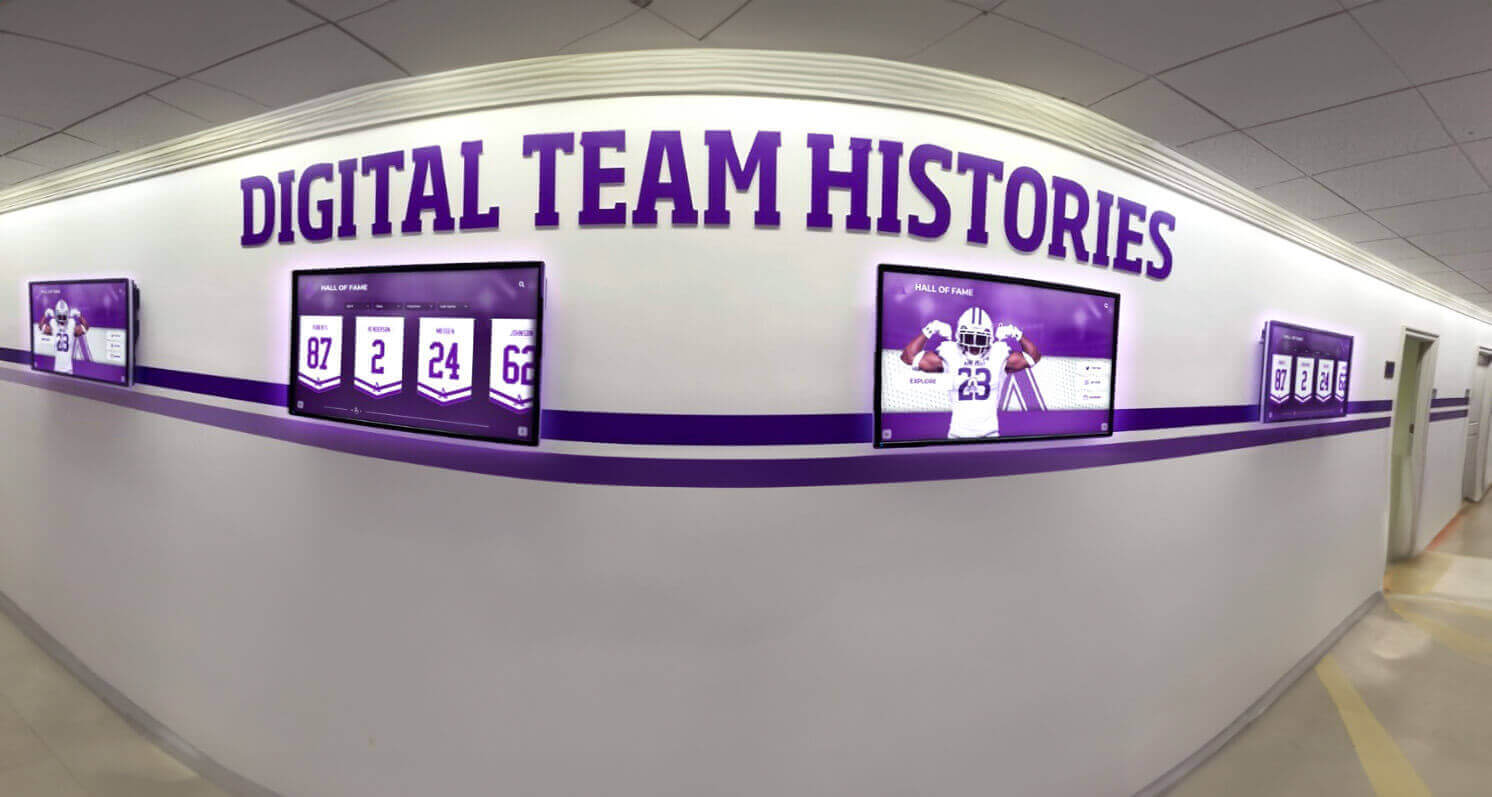
Special Recognition Categories: Additional recognition pathways honor diverse contributions including Legacy Society (documented planned gifts and bequests), Founder’s Circle (charter donors during critical early stages), Campaign Leadership (major gifts to specific capital campaigns), Matching Gift Leaders (employer matching program participants), Corporate Partners (business and foundation donors), and Memorial Giving (tribute and memorial contributions).
Creating multiple recognition pathways ensures diverse types of support receive appropriate acknowledgment while providing development officers numerous angles for donor cultivation conversations. Guidance on comprehensive donor recognition strategies demonstrates how thoughtful category design strengthens fundraising outcomes.
Selecting Optimal Location and Placement
Location dramatically impacts how effectively your donor highlight board engages your community and achieves recognition objectives while supporting active fundraising efforts.
High-Traffic Positioning: Ideal locations include main entrance lobbies where all visitors pass naturally, outside development or advancement office suites where donors frequently visit, adjacent to auditoriums or event spaces hosting donor gatherings, near cafeterias or gathering areas with sustained daily traffic, and along primary hallways connecting building sections where foot traffic remains consistently high.
Visibility and Accessibility: Effective placement requires adequate lighting avoiding screen glare for digital displays, sufficient space for multiple simultaneous viewers without crowding, ADA-compliant mounting heights and approach clearances, climate-controlled indoor environments protecting displays, and sight lines drawing attention from multiple directions encouraging organic discovery.
Contextual Relevance: Strategic locations connect recognition to impact including near facilities or programs funded by donor contributions, spaces featured during tours with prospective donors, areas where board members and donors frequently gather, and locations where the connection between philanthropy and mission remains visible and tangible.
For digital displays, touchscreen hardware considerations include network connectivity planning and power access requirements alongside physical mounting specifications.
Content Strategy for Maximum Impact
Compelling donor highlight boards require thoughtful content strategy addressing what information to include, how to present it effectively, and how to maintain relevance over time.
Essential Profile Information: Basic donor profiles should include name(s) and recognition level, years of support or giving history, specific funds or programs supported, recognition society memberships, and appropriate geographic or affiliation details (class year, city, etc.).
Enhanced Content Options: Richer profiles add professional donor photographs, brief biographical information highlighting organizational connections, personal statements explaining motivation for giving when donors provide them, impact stories connecting donations to specific outcomes, and video testimonials from donors or beneficiaries.
Campaign Integration Features: Active fundraising benefits from recognition that highlights current campaign progress toward goals, featured recognition for campaign leadership donors, countdown timers for matching gift opportunities, thermometer graphics showing milestone achievements, and honor rolls of recent donors during active giving periods.
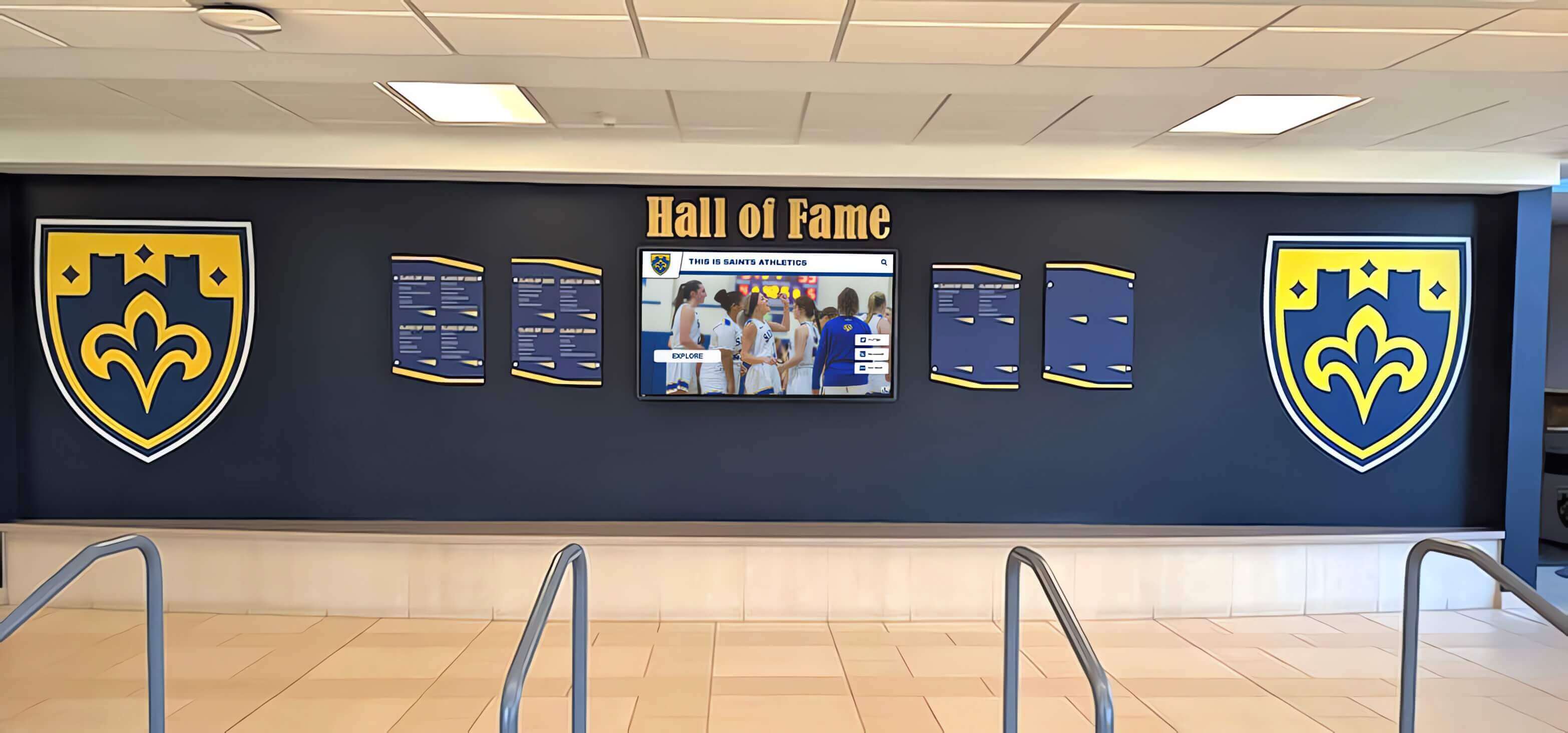
Privacy and Permission: Respect for donor preferences remains paramount through clear opt-in/opt-out mechanisms for public recognition, donor control over information shared beyond basic name, options for anonymous or partially anonymous recognition, processes for donors to review content before publication, and easy methods for updating preferences over time.
Implementation Best Practices for Donor Highlight Boards
Organizations achieving strongest recognition results follow systematic implementation approaches addressing planning, execution, training, and ongoing management.
Phase 1: Assessment and Planning
Begin by understanding current recognition state and defining clear objectives for new systems aligned with organizational fundraising strategies.
Current State Assessment: Document existing recognition displays and donor acknowledgment methods. Inventory which supporters receive current recognition, what sits in storage awaiting space, and what gaps exist in recognition coverage. Assess physical space available for installations or identify need for purely digital approaches. Evaluate stakeholder satisfaction with current recognition through development staff input and donor feedback.
Objective Definition: Establish clear goals for recognition systems. Are you primarily solving capacity constraints? Seeking improved donor retention? Supporting capital campaign success? Different objectives emphasize different system capabilities. Define success metrics enabling future evaluation—donor retention rates, giving growth, recognition engagement, or campaign results.
Stakeholder Engagement: Involve diverse perspectives in planning including development directors and major gift officers, board members and campaign volunteers, marketing and communications teams, facilities and IT staff for implementation support, and donor advisory groups when appropriate. Each group brings valuable insights about recognition priorities and practical implementation considerations.
Budget Development: Establish realistic budgets considering initial hardware and software costs, installation and infrastructure expenses, content development time and resources, ongoing licensing and maintenance fees, and contingency reserves for unexpected needs. Explore funding sources including operating budgets, capital campaign allocations, donor sponsorships for recognition technology specifically, and foundation grants focused on organizational capacity building.
Phase 2: Solution Selection
Research available recognition platforms, request demonstrations from qualified vendors, and make informed selections balancing capabilities, costs, and long-term support quality.
Vendor Research: Identify donor recognition system vendors serving nonprofits and educational institutions. Review websites and marketing materials critically, check references from similar organizations, evaluate platform capabilities against your specific requirements, and assess vendor stability and support reputation through independent research.
Demonstration and Evaluation: Request live demonstrations of shortlisted platforms focusing on actual functionality rather than sales presentations. Test content management ease with staff who will use systems, evaluate interface intuitiveness for public-facing displays, assess visual appeal and professional presentation quality, verify claimed features work as expected in realistic scenarios, and compare pricing structures and ongoing support terms across options.
Selection Criteria: Evaluate solutions against weighted criteria including feature completeness and quality, content management ease for non-technical staff, total cost of ownership including all ongoing expenses, vendor support quality and responsiveness, reference satisfaction from current customers, integration capabilities with existing fundraising databases, and scalability for future expansion as donor base grows.
Contract Negotiation: Carefully review terms for software licensing duration and renewal costs, hardware warranties and expected replacement timelines, installation scope and project timeline commitments, training and documentation provided for staff, ongoing support availability and guaranteed response times, content migration assistance from existing systems, and payment terms including any financing options available.
Resources on digital recognition implementation provide comprehensive frameworks for vendor selection and contract negotiation processes.
Phase 3: Content Development
Develop comprehensive donor recognition content making systems valuable immediately upon launch while establishing sustainable processes for ongoing updates.
Historical Research and Data Collection: Compile complete donor histories from fundraising databases, historical records, and institutional archives. Cross-reference information sources ensuring accuracy. This research phase typically represents the most time-intensive implementation element but creates foundation for meaningful recognition that honors all supporters appropriately.
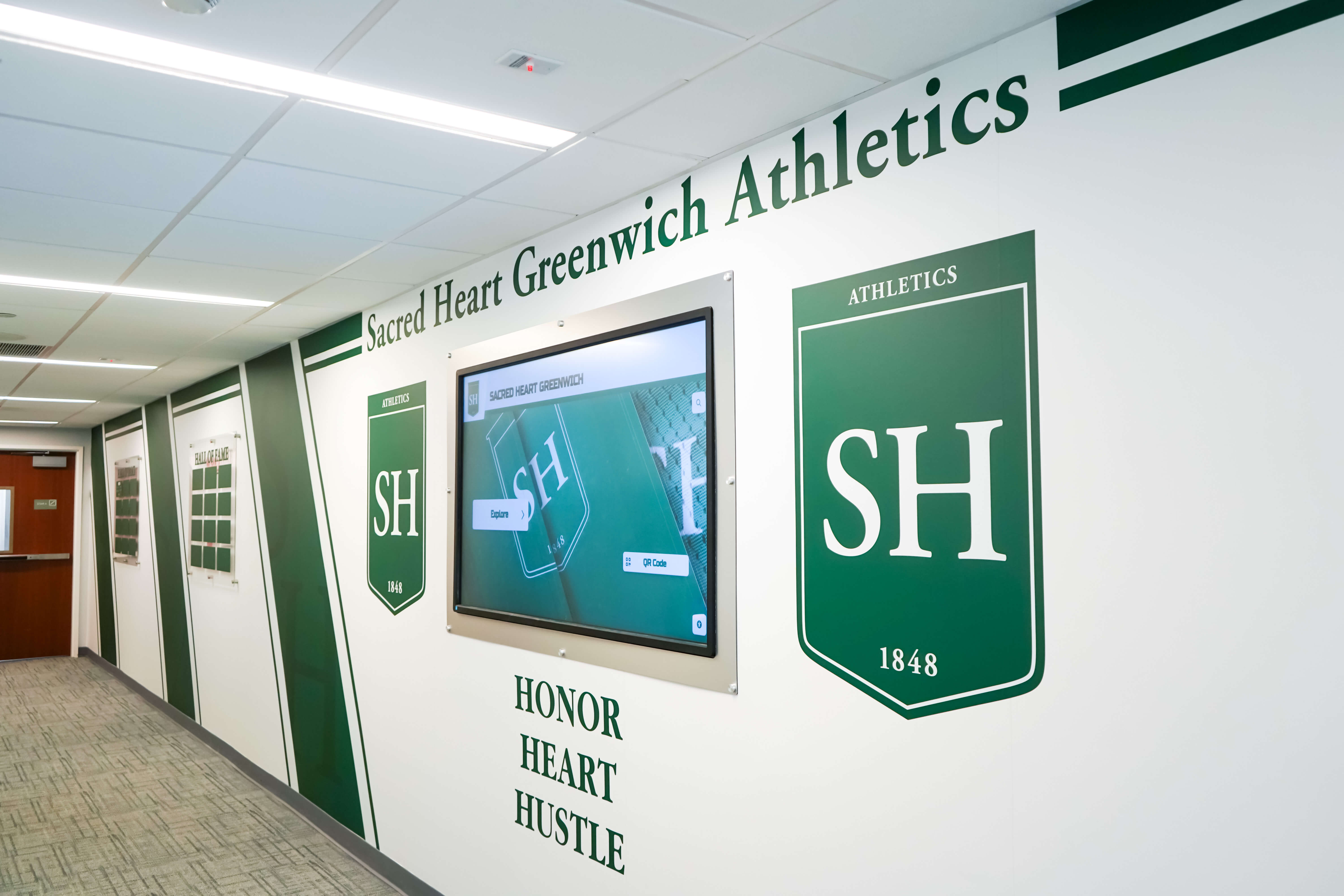
Photography and Media Gathering: Collect photos, videos, and media assets for donor profiles. Sources include organizational archives from events, donor personal submissions through outreach campaigns, professional photography at recognition events, historical photos documenting facilities or programs, and newly created photography for current major donors. Establish consistent quality standards ensuring professional presentation across all content.
Profile Creation: Develop detailed donor profiles using consistent templates aligned with your content strategy. Include complete giving information, biographical details appropriate to privacy preferences, photos and videos when available, and contextual information about significance and impact. Quality control processes ensure accuracy and appropriate tone before publication.
Organization and Categorization: Establish logical content organization structures making recognition discoverable. Create clear navigation categories aligned with giving societies and recognition tiers, develop consistent naming and labeling conventions, establish filtering and search parameters supporting multiple discovery pathways, and define featured content rotation strategies ensuring diverse donors receive visibility.
Phase 4: Installation and Launch
Physically install systems when applicable, train staff thoroughly, test comprehensively, and execute successful public launches celebrating donors while generating awareness.
Physical Installation (for digital displays): Professional installation ensures optimal results and long-term reliability. Verify electrical and network infrastructure meet requirements, mount displays securely following all safety codes, configure connectivity and system settings appropriately, integrate institutional branding and customization elements, and conduct complete testing before soft launch with limited audiences.
Staff Training: Comprehensive training enables confident content management by development staff. Train all personnel who will manage content updates, provide documentation and quick-reference guides supporting independent work, establish clear content approval workflows ensuring quality control, and ensure backup personnel can manage systems when primary administrators are unavailable. Frameworks for training teams on digital recognition ensure effective knowledge transfer.
Soft Launch and Testing: Limited release before public launch identifies issues requiring correction. Invite select stakeholders to explore systems and provide feedback, gather input about functionality and content comprehensiveness, identify bugs or usability concerns needing attention, verify all donor content displays correctly without errors, and refine systems based on testing results before wider release.
Public Launch Event: Grand opening generates awareness and excitement while celebrating donors meaningfully. Host formal unveiling ceremony with donor attendance, invite board members and campaign volunteers to participate, engage media for publicity coverage extending reach, promote through organizational communications and social media channels, and demonstrate features encouraging ongoing exploration by diverse audiences.
Sustaining Recognition Excellence Over Time
Successful donor highlight boards require ongoing attention maintaining relevance, accuracy, and value across years and decades of organizational evolution.
Regular Content Updates and Maintenance
Recognition currency requires systematic update processes keeping content fresh, accurate, and aligned with current organizational priorities and active campaigns.
New Donor Recognition Cadence: Establish clear timelines for adding recognition including immediate updates for major gifts and leadership donors, weekly updates during active campaigns, monthly reviews ensuring no contributors missed, quarterly comprehensive audits verifying accuracy, and annual recognition expansion projects enhancing historical content.
Content Quality Standards: Maintain consistent quality across all recognition through standardized profile formats and information completeness, verified biographical details and giving information, professionally edited photos meeting resolution requirements, proofread text free from errors and typos, and uniform formatting and presentation maintaining cohesive appearance.
Historical Expansion: Continuously expand recognition filling gaps in earlier periods. Research projects can focus on specific campaigns, time periods, or donor segments. Engage longtime board members and volunteers to verify historical information. Contact donors or families for photos and biographical content. Over time, these efforts create increasingly comprehensive recognition honoring complete organizational fundraising history.
Engaging Donors Through Recognition
The best systems create ongoing engagement opportunities connecting diverse audiences with organizational mission through meaningful acknowledgment of support.
Donor Participation: Invite donor contributions to recognition content including historical photos from events and facility dedications, giving history verification and additional context, personal reflections about their philanthropic motivations, and participation in recognition ceremonies, video content, or testimonials. This involvement strengthens relationships while improving content quality and personal relevance.
Social Media Integration: Extend recognition reach through coordinated social sharing. Feature specific donors or giving societies regularly, encourage recognized supporters to share their profiles, create hashtags for recognition discussions, celebrate anniversaries of historic major gifts, and highlight impact stories connected to donor generosity. Social amplification increases visibility far beyond those visiting physical installations.

Event Integration: Incorporate recognition into organizational gatherings including donor appreciation events featuring honor board tours, campaign kickoffs showcasing recognition as participation incentive, reunion programs highlighting class giving achievements, board meetings demonstrating recognition to leadership, and cultivation events using recognition in donor conversations. These touchpoints maximize recognition value while strengthening organizational culture around philanthropy.
Strategies for effective fundraising through recognition demonstrate how donor boards contribute to broader development success beyond simple acknowledgment.
Performance Monitoring and Optimization
Analytics and feedback inform continuous recognition improvement ensuring systems serve evolving organizational needs and donor preferences effectively.
Engagement Analytics: Monitor usage patterns revealing recognition effectiveness including total interactions and time viewers spend, popular donor profiles and giving levels receiving most attention, search patterns showing how audiences discover content, peak usage times informing content update scheduling, and trends over time indicating sustained interest or declining engagement needing attention.
Stakeholder Feedback: Systematically gather input through donor surveys assessing satisfaction with recognition, development staff feedback about recognition value in cultivation, board member observations from tours and events, suggestion processes collecting improvement ideas, and focus groups exploring specific experiences or challenges. This qualitative feedback complements quantitative analytics.
Iterative Enhancement: Use insights to guide ongoing improvements including adding requested features or content categories, refining navigation based on observed usage patterns, expanding popular content types generating highest engagement, improving search functionality addressing common queries, and enhancing visual presentation based on feedback and testing. Recognition systems should evolve continuously rather than remaining static after launch.
Maximizing Fundraising ROI Through Recognition
Organizations viewing donor highlight boards as strategic fundraising investments rather than passive acknowledgment achieve significantly stronger development outcomes through enhanced donor relationships.
Donor Retention and Giving Growth
Research consistently demonstrates that recognized donors give again at higher rates and increased levels compared to those receiving minimal acknowledgment. Visible, meaningful recognition strengthens donor commitment by affirming their philanthropic identity, demonstrating organizational appreciation meaningfully, connecting them to broader community of supporters, and reinforcing satisfaction with giving decisions through public validation.
Organizations implementing comprehensive digital recognition typically report improved retention rates of 10-15 percentage points, increased average gifts from recognized donors, higher upgrade rates from lower to higher giving tiers, and improved planned giving inquiry rates. These outcomes directly translate to enhanced fundraising capacity supporting organizational mission advancement.
Campaign Success and Leadership Giving
Donor highlight boards support capital campaign success by providing visible social proof encouraging participation, highlighting leadership donors inspiring others to step forward, demonstrating progress toward goals maintaining momentum, and creating conversation tools for major gift officers during cultivation. Organizations using dynamic recognition during active campaigns typically achieve higher participation rates and faster pace toward goal attainment.
Campaign-specific recognition features including real-time progress tracking, leadership donor spotlighting, matching gift countdown timers, and participation honor rolls prove particularly effective for driving giving during active fundraising phases. Guidance on advancement and marketing team strategies demonstrates how recognition integrates with comprehensive development programs.
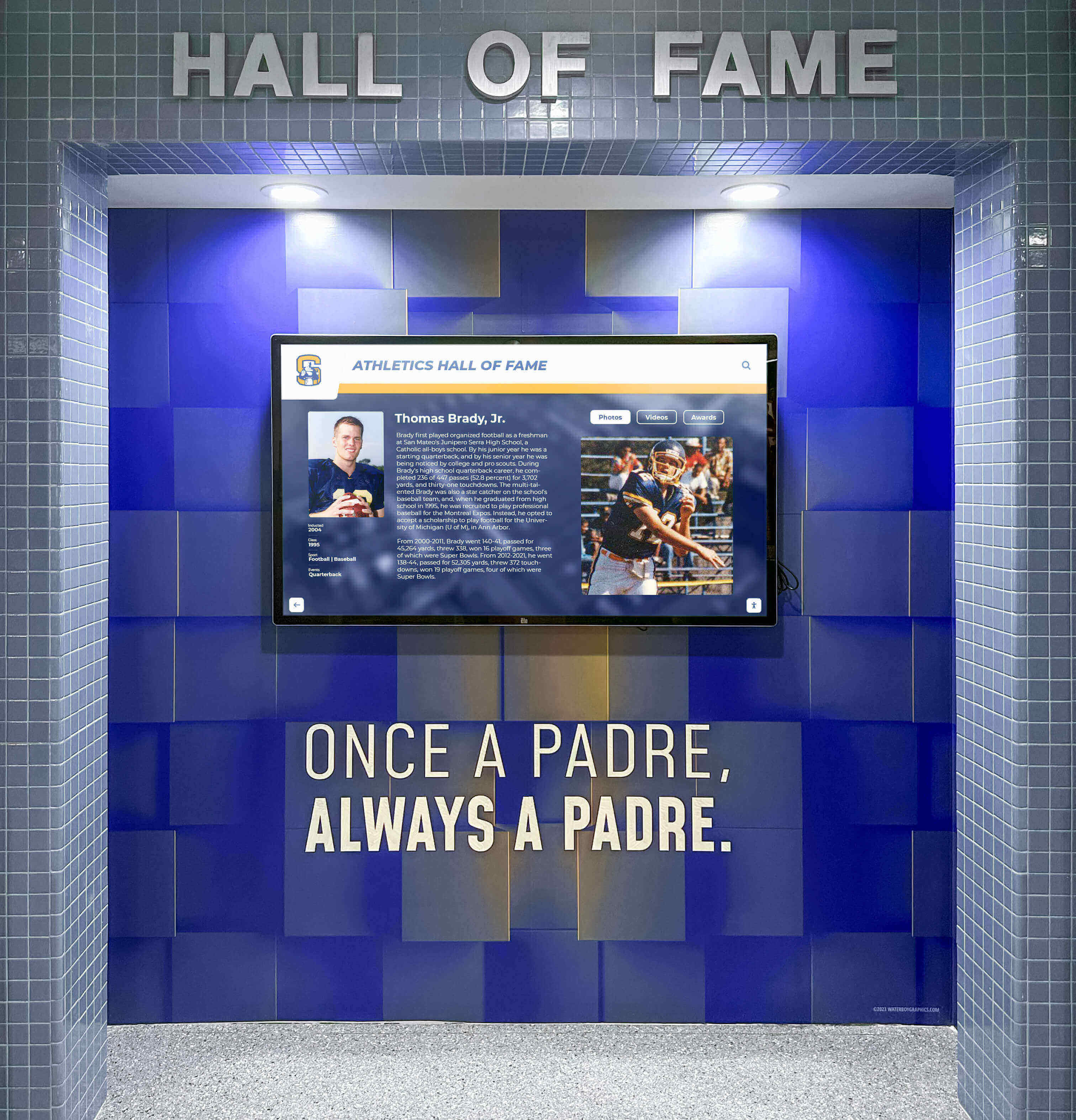
Board Engagement and Volunteer Cultivation
Comprehensive donor recognition provides powerful tools for board development and volunteer engagement. Board members gain confidence discussing giving opportunities when they can demonstrate how organization honors supporters. Volunteers leading peer-to-peer fundraising campaigns reference recognition as participation incentive. Campaign cabinet members use recognition visibility as cultivation tool during major gift conversations.
Organizations report that board members cite recognition quality during recruitment conversations, volunteers increase own giving to maintain leadership visibility, and development committee members use recognition during donor meetings. These engagement benefits compound fundraising impact beyond direct donor retention effects.
The Future of Donor Recognition Technology
Recognition technology continues evolving, with emerging capabilities promising enhanced engagement, improved fundraising integration, and new approaches to honoring generosity meaningfully.
Emerging Technologies and Capabilities
Forward-looking recognition systems will incorporate advancing technologies including artificial intelligence enabling personalized content recommendations, natural language queries for conversational donor discovery, predictive analytics identifying likely major gift prospects, augmented reality providing immersive impact visualization, and enhanced social integration extending recognition reach through donor networks.
Organizations implementing modern digital systems now position themselves to adopt these enhancements as they mature without requiring recognition replacement. Cloud-based platforms receive automatic feature updates maintaining system currency across years while protecting initial investments.
Expanding Recognition Scope
The most successful institutions recognize that comprehensive acknowledgment extends beyond financial contributions to celebrate diverse support including volunteer leadership and service contributions, in-kind donations of goods and professional services, corporate partnerships and matching gift programs, advocacy and awareness-building efforts, and alumni career mentoring and student support. Digital recognition platforms established for donor acknowledgment can expand to accommodate these additional recognition domains creating unified systems celebrating complete organizational support ecosystems.
Honoring Every Supporter: The Promise of Modern Recognition
Organizations exist to advance important missions—education, healthcare, arts, social services, environmental protection. When generous individuals invest financially in these missions, their contributions deserve recognition honoring significance appropriately and permanently. The challenge has always been that donor bases grow faster than recognition capacity, forcing impossible choices about whose generosity receives visibility and whose contributions disappear into forgotten archives or database records.
The best donor highlight boards eliminate these forced choices through unlimited digital capacity, engaging interactivity, instant updates, and comprehensive accessibility. Every major donor receives appropriate acknowledgment. Every annual supporter gains recognition. Every memorial gift honors loved ones appropriately. Physical space limitations no longer dictate whose excellence gets celebrated and whose contributions fade from organizational memory.
Modern recognition systems transform organizational culture around philanthropy by demonstrating that every contribution truly matters. Current donors see clear appreciation strengthening commitment to continued support. Prospective donors witness community confidence in your mission through extensive participation. Board members gain tools for cultivation conversations. Development staff access recognition supporting stewardship and major gift work.
Whether addressing insufficient recognition capacity, seeking improved donor retention, supporting capital campaign success, or simply wanting to honor generosity appropriately, digital donor highlight boards provide compelling solutions. They preserve complete giving histories, create engaging exploration experiences, enable instant celebration of new contributions, and ensure recognition reaches donors anywhere through web accessibility.
The transition from physical limitations to digital possibilities represents more than technology adoption—it represents commitment to recognizing everyone who contributes to organizational success, preserving every moment of generosity, and ensuring decades of donor commitment remain visible and valued for generations to come.
Organizations ready to transform donor recognition can explore purpose-built solutions like Rocket Alumni Solutions, which combine intuitive content management, professional presentation, comprehensive features, and reliable support specifically designed for nonprofit and educational institution needs. These platforms enable organizations to honor generosity appropriately while building recognition traditions that strengthen development outcomes, engage communities, and inspire future supporters to join philanthropic legacies.
The best donor highlight boards don’t force choices between recognizing some supporters while ignoring others. They celebrate every contribution, honor every donor, and preserve every moment of generosity that makes organizational missions possible. Every supporter deserves recognition for their commitment—not just those whose contributions happen to fit limited physical space. Modern recognition systems finally make comprehensive celebration possible.



































